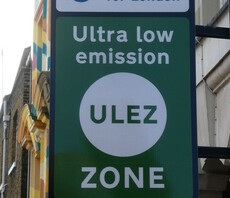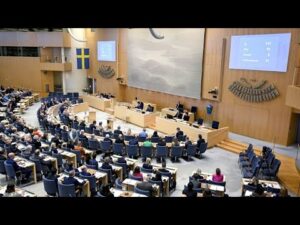London ULEZ expansion achieved 92 per cent compliance rate in first month


New statistics released today by the Mayor of London’s office reveal the positive impact of the expanded scheme since it launched in October
The vast majority of vehicles driving through London’s expanded Ultra-Low Emissions Zone (ULEZ) are compliant with the new air pollution standards.
That is according to a report released today by the Mayor of London that evaluates the impact of the first month of the expanded zone. The report found 92 per cent of vehicles driving in the zone are compliant with emissions standards, up from just 39 per cent in 2017 when the expansion was first announced.
The ULEZ was introduced in the city centre in 2019 and was expanded this October to the north and south circulars, covering nearly four million people and a quarter of the city. Together with the stricter Low Emission Zone standards introduced for heavy goods vehicles in March, the ULEZ is expected to reduce nitrogen oxide (NOx) emissions from road transport by 30 per cent across London in 2021.
Before the pandemic, there had already been a 44 per cent reduction in roadside nitrogen dioxide concentration compared to February 2017 levels, according to the Mayor’s Office.
The new data also reveals around 11,000 fewer vehicles and 47,000 fewer higher polluting vehicles on average have driven through the zone each day compared to two weeks before the expansion was introduced. The Mayor of London’s Office estimates there will be a five per cent reduction in CO2 emissions from cars and vans in the first year of ULEZ, on top of an already six per cent cut in the central London ULEZ since 2019.
“Just one month after expanding the world’s first Ultra Low Emission Zone, we have seen a significant reduction in the number of older, more polluting vehicles driving in our capital,” said Mayor Sadiq Khan. “This is vitally important because toxic air is an invisible killer, responsible for one of the biggest public health crises of our generation.
“In central London, the ULEZ has already helped cut toxic roadside nitrogen dioxide pollution by nearly half. But pollution isn’t just a central London problem. Everyone should have the right to breathe clean air, which is why expanding the ULEZ was a crucial step. The high compliance rate means that millions of Londoners are already benefiting from cleaner air.”
Even outside the expanded ULEZ zone, 82 per cent of vehicles comply with the standards, the data reveals, demonstrating that its impact stretches beyond the directly affected zone.
The Mayor’s Office today also announced that the compliance rate for HGVs in the wider LEZ is 95 per cent, up from 48 per cent in 2017 when stricter rule changes were first announced.
The ULEZ is expected to contribute to avoiding 300,000 new cases of air quality-related disease, and preventing more than one million hospital admissions, alongside the Mayor’s other air quality policies. However, the Mayor’s Office have noted that it is not yet possible to determine the full impacts of the expanded ULEZ scheme on air quality concentrations and emissions at this stage.
Commenting on today’s news, Professor Sir Stephen T Holgate, MRC Clinical Professor at Southampton, UKRI Clean Air Champion and Special Advisor to the RCP on Air Quality, said: “Air pollution is a scourge on society, especially harming the young and old as well as those with pre-existing diseases. For too long, people have said that to tackle this in any serious way was too difficult. What the Mayor of London has shown by now introducing the world’s first Ultra Low Emission Zone is that major reductions in toxic pollutants affecting health can really be achieved. Following its expansion, the high rate of compliance with the ULEZ standards already seen across London means fewer polluting vehicles on our roads with vital health benefits for all Londoners.”













